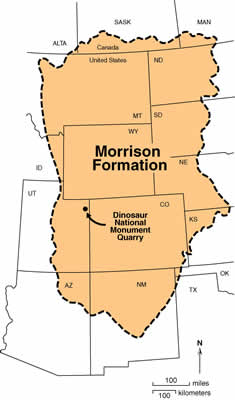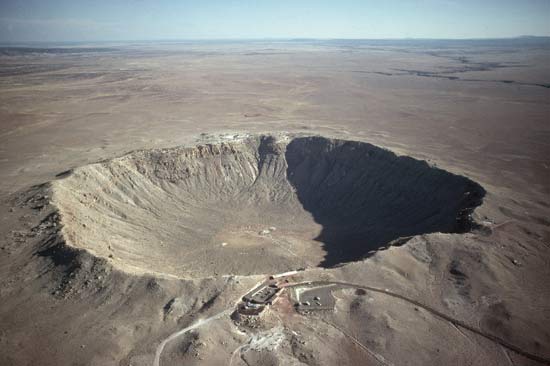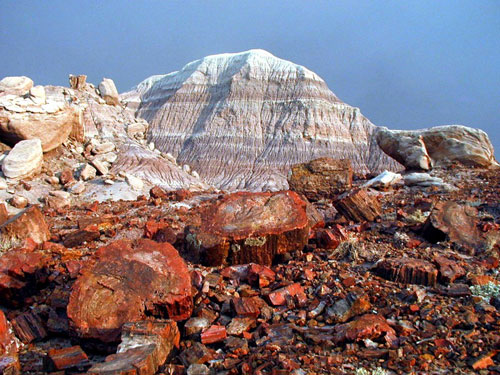Lionz wrote:Neoteny,
What would sunlight coming down and striking a planet without something able to harness energy from sunlight on it do to help entropy decrease on it?
Nothing, until something develops the ability to harness it. I'm not saying sunlight is the initial cause for the decrease in entropy, it's just the main one that explains the majority of the local decrease (and net increase in our system) in entropy.
Lionz wrote:Does sunlight not actually help break stuff down? There was quite a bit of energy added to Hiroshimo on August 6th of 1945 perhaps.
UV can damage DNA and fade pigments and all that, but it doesn't really break stuff down. Sun shines on grass all day and it doesn't really fall apart.
Lionz wrote:What suggests to you that earth currently has a population of living organisms who all share common ancestory with one another, if something does?
Genetics represent the primary evidence I'm familiar with as far as commonality of organisms. The universality of DNA, as well as things like shared synteny and homeobox genes and functional complementation of genes heavily imply shared ancestry. On a broader note, microevolution implies macroevolution, which is kinda what Darwin finally recognized.
Lionz wrote:What has the carbon-14 method actually been calibrated with? Other methods that are derived from faulty assumptions having to do with believing earth is billions of years old? We might be able to use tree rings to help us get a good idea about how long trees have grown, but what do tree rings tell us about when trees have lived and died?
Tree rings are cool in that you can compare rings from two different trees to count back through time. This is done because every year trees add a ring, and the size of the ring depends on how fast the tree grew (which is influence by things like amount of precipitation). These different trees can be matched up using these different sizes. For example, if you cut down a tree that's alive today and it gives you the following ring structure:
||| | | |||| | | |||
^last year
Imagine that makes a circle. Next you find a tree that's dead and see what it's rings look like. Maybe something like this:
||| | | | |||| | | |||
You can then take those trees and match up the rings based on these years of differential growth.
||| | | |||| | | |||
||| | | | |||| | | ||| ^last year
^20 years ago ^10 years ago
That is dendrochronology, and it is based on common sense, not thought about the age of the earth. If you use that to go back far enough, you get a tree old enough to be dated by C14 (you can use other isotopes for more recent things), and if you date it using C14, you get a number very close to the correct date. It is not one assumption (billions of years old earth) holding up these disparate ideas, these are all simple facts that mutually support each other.
Lionz wrote:What if Adam did have pubic hair as a one year old?
What the hell are you talking about? Are you making fun of my name?
Lionz wrote:You might consider stones themselves to be evidence for earth being billions of years old, but who theorizes that He created earth without stone in it?
This is important. You see the stones, and since you have the notion that a god is the cause, you automatically assume god did it. Scientists look at the stones and wonder if there is a different theory that fits the data. There is, and it fits a lot of data other than just the age of stones.
http://www.infidels.org/library/modern/ ... elium.htmlHelium-4 is the product of radioactive alpha decay whereas Helium-3 is primordial. The rates of their "production" are simply the rates of their escape from within the earth to the atmosphere.
A fair amount of helium is lost from the earth's atmosphere by simply being heated up in the elevated temperature of the exosphere (Dalrymple, 1984, p.112). The exosphere is the outermost layer of our atmosphere, beginning after the ionosphere at about 300 miles above the earth. When a lightweight helium atom is heated up, especially Helium-3, which is even lighter than Helium-4, it can easily pick up enough speed to escape Earth's gravity altogether and head off into outer space. Heating gas is a little like swatting rubber balls with a paddle; the lighter balls travel a lot faster after being swatted. In this manner about half of the Helium-3 produced is lost to outer space. The amount of the heavier Helium-4 lost by this method appears to be far short of the amount produced. Hence, the point of Morris' argument which is based on calculations by Cook. However, there are other mechanisms of helium escape which Morris and Cook have overlooked. Creationist Larry Vardiman (ICR Impact series, No.143, May 1985) at least recognizes some of these other factors. However, he has not fully addressed the matter, let alone proven that the earth is young.
The most probable mechanism for helium loss is photoionization of helium by the polar wind and its escape along open lines of the Earth's magnetic field. Banks and Holzer [1969] have shown that the polar wind can account for an escape of 2 to 4 x 10^6 ions/cm^2 sec of Helium-4, which is nearly identical to the estimated production flux of (2.5 ±1.5) x 10^6 atoms/cm^2 sec. Calculations for Helium-3 lead to similar results, i.e., a rate virtually identical to the production flux. Another possible escape mechanism is direct interaction of the solar wind with the upper atmosphere during the short periods of lower magneticfield intensity while the field is reversing. Sheldon and Kern [1972] estimated that 20 geomagnetic-field reversals over the past 3.5 million years would have assured a balance between helium production and loss.
(Dalrymple, 1984, p.112)
Dr. Dalrymple goes on to explain that even though our understanding of the helium balance in the atmosphere is incomplete, the situation being very complicated because of various hardtocalculate factors, we do know one thing. "...it is clear that helium can and does escape from the atmosphere in amounts sufficient to balance production." (1984, p.113)
Thus, the helium balance calculations provided by creationist Melvin Cook (which are used by Henry Morris) cannot provide a reliable minimum estimate of the earth's age. Their argument is a fatal oversimplification of a complex problem.
Lionz wrote:What do you know about the Mysner Effect? And what would a six inch layer of ice around earth do?
The Bible says there used to be water above the firmament. Water or ice, it might have been ice because ice at low temperatures becomes magnetic and you can actually suspend it in the magnetic field of the earth. It is called the Mysner Effect.
Ice Canopy?
Have you ever seen a magnet floating on top of another magnet? That is called the Mysner Effect. If ice was up there, say 10 miles up, 6 inches of ice just to pick a number, that super cold ice suspended by the magnetic field would increase air pressure on the earth and would filter out the sunlight. See, water stops a lot of the damaging effects of the sunlight; it would make the whole earth like a big greenhouse. How many know what a greenhouse is? They have got all glass walls; you have to dress in the basement in a greenhouse. Well, apparently the whole earth used to be that way.
Matter of fact, scientists just recently discovered there is still lots of water out there in space; enormous amounts of water, and water is an amazing molecule by the way. One of the only substances that as it freezes, it expands instead of shrinks, boy it is a good thing because the water freezing and expanding makes it float on top of water otherwise the lakes would freeze from the bottom up--make it pretty tough on the fish would it not? Pretty neat the way that works, the rest of them shrink and sink when they freeze, not water, amazing substance! Moody Science films has a great video just on water, it is called "Water, Water Everywhere", tremendous video from Moody Bible Institute.
What Good is a Water Vapor Canopy?
There is a new theory about the dinosaurs that I think ties in with what the Bible says about the original creation. See, scientists are kind of confused about dinosaurs, they have two serious problems. In 1993, all the dinosaur experts got together in Chicago and they said folks, we have got a problem, dinosaur lungs are too small they could not breathe plus their nostrils are too small. An 80-foot Apatosaurus, this article says, had nostrils the same size as a horse. How is an 80-foot animal going to get enough air through nostrils the same size as a horse? He would be sucking so hard trying to get a breath, it would set him on fire from all the friction from the wind whistling in there! Couldn’t breathe! Well, apparently, they did breathe, we find their bones all over the place. How could he breathe?
Double Atmospheric Pressure
Well, today an eighty footer could not breathe, but before the Flood, I think they had double the air pressure from that canopy of water or ice over head-increase the air pressure. Plus, when they drilled into the amber (how many saw Jurassic Park when they went after the mosquito blood?), sometimes in amber they find air bubbles trapped. The air bubbles trapped in amber have 50% more oxygen than we do today. Interesting! Did you know if you lived in a world with double the air pressure and 50% more oxygen, just breathing would be exciting! Adam would go,
"(breathe) Wow! Eve, that was fun, let’s do that again, ready?" Because under those conditions, not only does your hemoglobin take on oxygen, your plasma gets oxygen saturated in your blood stream which means you could run for hundreds of miles without getting tired. Adam and Eve did not need a car; they could run to Grandma’s! Only they did not have a grandma, or a mother-in-law by the way, which was why it was paradise! No, actually my wife has a great mother-in-law, but!
I think before the Flood came the earth had double the air pressure and increased oxygen. That explains how the dinosaurs could get so big on small lungs.
6 inches of water is not very impressive. Even if you account for the distance around the outside of the earth, you would only be getting a few feet of floodwater. Not enough to cover most mountains. In order to have enough water to cover the earth, there would have to be so much water around the earth that it would block out the sun. And then, when it came down, it would pressure cook us.
Lionz wrote:What has actually been used to date strata not counting fossils themselves?
It's common sense that strata are laid down newer on top of older. That is a very basic method of dating. Radiometric dating (which has been confirmed by dating things of known age like trees and texts and such) has confirmed the accuracy of stratigraphic dating.
Nothing that you posted on this site was geologic evidence for a flood. I'm not going to sift through pages of your random images and reply to every one. If you have something you want to talk about it, do so here. I don't want to guess at what you want me to discuss.
Lionz wrote:How common is it for you to conclude there is no evidence for something somewhere without thoroughly examining it?
Give me a break. You haven't examined anything I've said. You just post links to what other people have written. I've looked at your arguments and tried to explain things to you. I've seen evidence. I've dug through rock. I've pulled the fossils out of the earth with my own hands. I've measured the stratigraphy. You have read the Bible and listened to preachers. You have no evidence. You have rhetoric and presumptions.
Lionz wrote:Does this show different layers of strata thousands of years apart?

No, it shows a few floods over the life and death of a tree.
You can't even decide where you want your floodwaters to come from now? Water from inside the earth would be extremely hot (like hot springs, pressure is serious business) and would have boiled Noah and those poor animals alive. Plus, events like that leave very specific geological markers which we do not see.
Tectonic theory explains why those places have been underwater. Our earth has gone through many significant changes. It's not surprising that we would find remnants of ancient oceans. Water does come from oceans, so that's convenient. Also, we have found "polystrate" (not an actual geologic term) fossils all over the place. Why wouldn't we. Trees grow all over the place, and floods happen all over the place.






















































































































